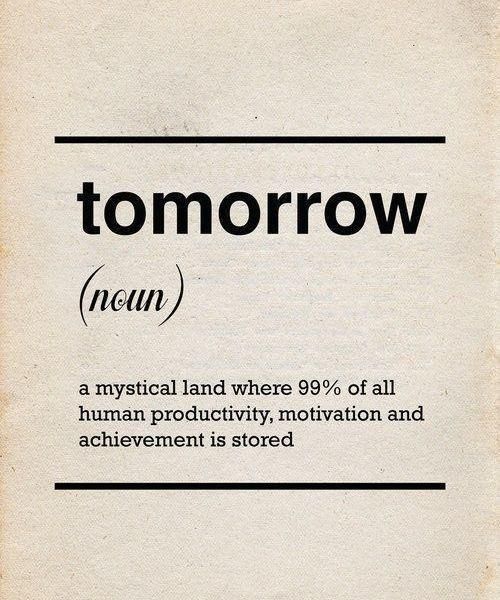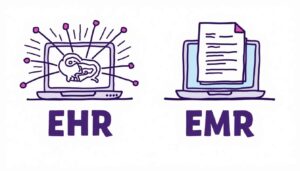How to Use Mindfulness Activities to “Hack” Your Procrastination
10 Jul 2020 By: Natalya Bucuy
Updated
Mindfulness activities: Why do we need them daily?
Procrastination is your brain being a whiny toddler.
As we discussed in our recent article, How to Stop Procrastinating by Winning the War in Your Brain, when we procrastinate our brains turn on their pre-evolution instincts to avoid danger and unpleasantness.
Some scientists call it the lizard brain because it’s the same gooey brain substance that makes a lizard run away from danger. Humans have other, more evolved, brain parts that can come up with better solutions. But when the lizard brain kicks in and is winning, we decide to scroll through facebook instead of writing an article.
We avoid the activity we do not want to do if it is in any way unpleasant or is just something that requires effort.

While the brain science of procrastination is fascinating, what everyone really wants to know is how to stop procrastinating. Because, let’s face it. Avoiding is all good until we’re once again sweating minutes before a big presentation because we’re unprepared.
Once we explored the psychology and the brains behind the procrastinations (pun intended), we learned that one way to stop procrastinating is to employ mindfulness.
According to one study, increased mindfulness predicts lower levels of subsequent procrastination. Reducing individuals’ tendency to procrastinate can also promote mindful behaviors. (Personality and Individual Difference Study)
But what exactly is mindfulness and just how do we use it?
In this follow up article on the psychology of procrastination we will explore the science behind mindfulness. Then we’ll discuss specific mindfulness activities that can help us really “hack” the problem.
But first, a bit of story time.
The Voice In Dan Harris’ Head Was an Asshole
On the surface Dan Harris had it together.
His journalism career path took him from a small newsroom to the Taliban battlefields in Afghanistan. The war reporting success eventually brought him to New York City. There he became an anchor for ABC News at the age of 30. He successfully led national news reports on the topics of politics, religion, and criminal justice.
But behind the scenes things weren’t so great.
Harris battled a cocaine and ecstasy addiction as well as depression and anxiety. It all came to a halt for him when he had a panic attack while reporting live on “Good Morning America.”
That is when he began his search for a sound strategy that would help him make some positive changes. Using his journalism connections he interviewed mental health professionals, spiritual leaders, and self-help mentors.
His quest eventually led him to one discovery. His addictions, daily struggles, and the eventual breakdown had to do with one thing.
He had a voice in his head and that voice was kind of an asshole.
Do You Hear What I Hear?
No, no. Harris wasn’t crazy. Not in a sense that was more so than any of us. We all have that voice, that inner conscious self that keeps talking endlessly.
Sometimes that voice leads us to greatness (this morning mine told me I definitely could go just a little faster on my run. And I did.)
A lot of the time it’s our inner critic. It tells us that our bellies are too soggy. That our work sucks. That we’re not smart enough, not fast enough…
We live with that voice day in and day out so we don’t really notice it. And because we have accepted it and let it run its endless monologue unquestioned, it kind of takes over our lives. It makes us overeat and make bad decisions in our love life. Sometimes it makes us fight with our parents and not exercise enough. It can be rude and critical and it puts us down.
“The critic is full of BS. My inner critic contradicts himself all the time. “You’re too ambitious, you’re supposed to be spiritual,” he’ll say one moment. And then the next, “you’re not ambitious enough, and your friends are more successful than you are.” I’m too loud; I’m too introverted. Too normal, too weird. Really, my inner critic flips positions more than most politicians. And yet, always with a sense of conviction and certainty.” (Jay Michaelson, mindfulness teacher)
And it makes us procrastinate, too. Because the voice in our head is our prehistoric lizard brain’s more modern and more confident cousin. It wears better clothes and has cooler gadgets, but is just as afraid of the monster under the bed. It doesn’t want to finish that report right now. And it’s really good at convincing us we do not either.
You Have an Itch, But You Don’t Have to Scratch It.
In his quest for change and mental stability, Harris discovered that there is a way to quiet and rein in that voice a bit. Make it listen to our thoughts and feelings and make it work for us, not against us. And the way to do that is through the practice of mindfulness.
Harris documented his discoveries in his book, 10% Happier: How I Tamed the Voice in My Head, Reduced Stress Without Losing My Edge, and Found Self-Help That Actually Works–A True Story (Dey Street Books, 2014)
The hilarious memoir (which, I think, everyone should read) not only follows Harris’ way to salvation. It delivers scientific evidence that mindfulness is a way to quiet the inner critic that is driving us all nuts. It can serve as a helpful soldier in the war against the lizard brain that makes us less productive, less confident, less happy people.
“The research is strongly suggestive of an almost laughably long list of benefits [of mindfulness] These include: lowering levels of stress hormones, reducing your blood pressure, and boosting your immune system. It also has shown to mitigate depression, anxiety, ADHD, and age-related cognitive decline.” (Ten Percent Happier)
Mindfulness, as the title of the book suggests, makes us 10% happier.
Here is how Harris (disguised as an adorable mouse) defines and describes mindfulness:
Mindfulness teaches us to respond to things that happen, not react to them. When we are mindful we do not follow every little instinct and thought our lizard-brainy cousins in our heads give us. With mindfulness, we give ourselves time and space to actually see what is happening. That way we can understand it and make a choice for an action based on evidence and our values, not on the “danger! danger!” calls from the toddler within.
If we have an itch, we might want to scratch it. But sometimes scratching an itch is not in our best interest. Eating a tub of ice cream at midnight might sound like a perfectly great way to satisfy a craving. But is it, really, if we stop and think for a minute? Organizing a spice drawer also sounds great if it helps us avoid doing our taxes. But it isn’t.
The Workout: Mindfulness Activities to Build the Muscles
The first time I ran three miles straight I cried. Not because I was tired or in pain, but because I was in amazement of my body being able to do it. It took me two months of running every other day and slowly increasing my distance and speed.
Now, there are obvious benefits to running and most of us probably have heard about them since the young age. But we can’t just get off the couch and run a 5K. (The actual fitness program that promises that result, “Couch to 5K,” takes 9 weeks) In order to run longer distances we need to build up the muscle and the stamina. That takes time and, most importantly, practice.
The same goes for mindfulness. Simply telling ourselves to be mindful won’t make us drop our procrastination habits and get to work. Our brains are like our muscles – to build them up we need to exercise.
So here are some daily mindfulness activities to workout our mindfulness muscles.
Note that your lizard brain and the inner voice will fight you on these activities, perhaps making you procrastinate them, too. They will say some things to talk you out of doing them. Don’t be mad – that’s their job.
Don’t shut them up, either.Instead, listen to them, acknowledge them, make them feel heard and loved. Once they do, they will let you practice mindfulness in peace.
“Your demons may have been ejected from the building, but they’re out in the parking lot, doing push-ups. (Dan Harris)
1. Listen to Yourself: Meditate
Everyone wants to and deserves to be heard and recognized. Even you. Especially you. Meditation helps us hear our inner voice and acknowledge it instead of fighting against it. That, in turn, identifies the drive behind procrastination and increases the chances of overcoming the habit.
A study at Harvard found that people who meditated just for two months showed growth of their gray matter in the areas of the brain associated with self-awareness and compassion. Meanwhile, the area of the brain associated with stress shrank. (Harvard News) Other studies of mindfulness meditation found decreased depression in over 4,600 adults (Healthline).

Meditation cultivates mindfulness. Like a biceps curl for our arms, meditation encourages our minds to recognize its own voice. Yet, just like society viewed exercise as something out of the ordinary only a few decades ago, it sees meditation as a spiritual practice unachievable by most.
“Meditation suffers from a towering PR problem.… If you can get past the cultural baggage, though, what you’ll find is that meditation is simply exercise for your brain.” (Dan Harris)
The reality, however, couldn’t be further from the truth. Many institutions, including the military and the medical community, encourage and practice meditation.
“U.S. Army Medical Research and Materiel Command, has shown that mindfulness meditation exercises positively support active-duty Soldiers in protecting and training their own minds and helping better prepare Soldiers for high-stress combat situations while also improving overall cognitive resilience and performance.” (U.S. Army)
So what do You do?
The concept of “clearing one’s mind,” as it turns out, that is not a requirement for meditation!
“It is impossible to clear your mind unless you’re enlightened – congratulations! – or dead.” (Dan Harris)
In reality, the whole premise of meditation is not to clear the mind, but to notice it. When we sit with ourselves and try to concentrate on our own breath our mind immediately wonders off. And that’s ok. What we do then is notice what’s happening (remember the definition of mindfulness?) and carry on. THAT”S IT.
Here is Dan Harris with his quirky take on how to take on the practice in just 90 seconds. (Seriously, try it out, it’s only 90 seconds and you get to see his adorable cat, Ruby.)
Ready to give it a try? Here are some tips to get started:
- Start small and lower your expectations. Don’t set unrealistic goals, even if you meditate for 30 seconds a day, it’s worth the trouble
- Fit it into your life. Follow your schedule, meditate on the go if you have to. Every little bit counts.
- If you stop, begin again. Don’t kick yourself for a skipped day (or month). Just start again.
- Use help. There are tons of support available for new meditators. There are tons of books, articles, podcasts, and wellness apps that can help you get started and stick with it.
“If you’re meditating and it’s easy, you’re either enlightened or you’re cheating.” (Dan Harris)
So let go of the prejudices you may have and join the practice. It will help you strengthen your mindfulness muscle. Which, in turn, will curb your habit of procrastination. Make meditation one of your most important mindfulness activities.
2. Speak to Yourself in Written Form: Journal
The mindfulness approach to curbing the procrastination habit includes seeing our behavior for what it is. Only then we can dismiss the excuses, validate the emotional feelings we are experiencing, make a plan, and act.
Journaling helps develop mindfulness skills because it forces us to put down our emotions on paper. We can physically see them and understand them better. The real, psychological reasons we procrastinate reside in our emotions. So what are those emotions? What about the activity we put off repulses us? Journal to find out.

For example, one reason for procrastination is perfectionism. We think that because we can’t do it perfectly right now, we‘re better off postponing the activity.
Elizabeth Gilbert, a best-selling author of Eat, Pray, Love and Big Magic, knows a thing or two about perfectionism.
“Perfectionism is fear in high heels and a mink coat… It’s fear that you’re not good enough, it’s fear that you’re not worthy, it’s fear that you’re going to be revealed, uncovered, exposed, betrayed, criticized. So you mask that absolute terror by never making a mistake.” (Elizabeth Gilbert)
The way to unmask the fear, and to be able to move beyond it, we first must have a heart-to-heart conversation with it, Gilbert explains. And then we must take it along for the ride.
Here is how she hilariously explains it, (there is talk of a fun road trip!):
The reason we procrastinate might be perfectionism, boredom, or any other emotion. Whatever it may be, understanding it and taking it along for the ride without any decision power is a great strategy.
Journaling is one of the mindfulness activities that helps us understand what we are procrastinating why, and then come up with tools to overcome it.
3. Guide yourself: Set Intention and Manage Expectations.
A couple of days ago I woke up at 3 am, unable to sleep. Instead of mindlessly playing on my phone I decided to seize the night and use the energy for something good. So I got up, got dressed, had some coffee, and made a two-page long, very ambitious to-do list. It included just about anything I procrastinated to do during the day – cleaning tasks, writing tasks, emails, bills…
The kicker? I put the date on top of the list, fully expecting myself to finish ALL of the tasks by the end of the day. Then I got to work.
It came as no surprise that a few hours later my body remembered that it only slept for three hours and promptly put itself back to bed. Once I woke up later that morning I did a few more things off the list. However, I wasn’t able to finish even half of all those tasks on the list. Not then, and still not to this day. Moreover, now when I look at that sad unfinished to-do list still sitting on my desk, I keep putting off those tasks again and again. I kind of feel bad and, honestly, that list looks quite overwhelming.
The lesson here is that one of the mindfulness activities we should implement in our routines is managing expectations. If we let our ambitious minds go crazy and overload, we will not get ourselves out of the procrastination habit, we will dig ourselves deeper.
Unrealistic expectations go hand in hand with perfectionism and procrastination. Managing those expectations is one of the key mindfulness activities we can adopt. Part of that strategy is also goal setting.
Successful Goal Setting Includes an Action Plan
Michael Korzonek, a personal development expert, shares a step-by-step system that can help with goal setting, break down, and organization of actions. The first step in this strategy is specific goal setting. Then he follows with a detailed breakdown of the goal into high impact actions. (Because we all know that setting up big goals just doesn’t work. We need small habits and actions to support those goals.) The final step is to track and organize the progress day after day. Make this process part of your mindful activities routine daily.
4. Nurture Yourself: Practice Self-Care
Part of the safety announcements at the beginning of any airplane flight is the call to put on one’s own oxygen mask before helping others in case of emergency.
The idea is that one cannot help others if she herself is in danger. As the saying goes, “you cannot pour from an empty cup.”
This principle applies to mindfulness cultivation to fight procrastination. We cannot actually get to the things we need to do if our energy cup is empty. Therefore, one of the mindfulness activities we can take on to cure procrastination is self care.
When you procrastinate self-care, you are setting yourself up for an even greater failure. If you don’t take care of yourself, it may take a while to manifest but eventually it will catch up to you in the form of some physiological or even mental imbalance. It’s when you deny yourself permission to engage in self-care that you begin to lose momentum, focus, and effectiveness.(Wendy Nolin, Life Coach)
Remember my pre-dawn hours of to-do-listing? Eventually I couldn’t stick to my anti-procrastination plan because I was plainly and simply tired.
So we must make sure our self-care is in check. Our self-care is purely individual. What makes one person feel relaxed and recharged with energy might not work for someone else.
For some, power naps, art, and working out work wonders. For some, a 10-minute time period with a jigsaw puzzle might do the trick. A walk or a bath with essential oils might do the trick for someone else.
Whatever mindfulness activities reset our brain is not only ok to do, it’s necessary to do. They allow our brains to focus and be mindful. So find your routine and make it one of your mindfulness activities.
Today’s Mindful Moment: use transition routines to give your brain a clue that is is time to shift your focus. Click link for full video. https://t.co/9JC1rlV24n #mindfulness #selfcare #transitionroutines pic.twitter.com/UstJzrD5xZ
— Kathy Marvel (@KsmarvelKathy) July 9, 2020
Be with Yourself and Center with Minfulness Activities
“I need some shelter of my own protection, baby
Be with myself and center
Clarity, peace, serenity” (Big Girls Don’t Cry, Fergie)
These song lyrics document Fergie’s call for some personal time.
Her song’s protagonist’s problem is her love relationship. Dan Harris’ problem was with drugs and mental dissonance. Yours (and mine, for sure) might be procrastination.
Whatever the problem might be, the science and the experts all seem to point to mindfulness activities as the solution.
So engage in meditation, journaling, goal setting, and self-care to up your mindfulness game.
Get in touch with your inner self and stop procrastinating. Now!
What are mindfulness activities and why do we need them daily?
Mindfulness activities are very simple practices that allow a person to be aware of the happenings in both the body and the mind at that moment without reacting to it directly. A constant practice of mindfulness makes your brain halt, analyze and then select a response instead of just acting automatically. When this happens, stress-free, less procrastination, and decision-making based on one’s values rather than momentary urges are the consequences.
What is the connection between procrastination and the “lizard brain” as well as the inner critic?
In case of procrastination, the most primitive part of the brain (often referred to as the “lizard brain”) tries to steer clear of anything tough or painful. This is the very system that once made us run away from danger, and now it is the same that is coaxing us to scroll through the phone or do the spice drawer instead of working on the important task. On top of that, one’s inner critic adds fuel to the fire by throwing in thoughts like “you will not be able to do this” or “you will fail anyway”, which denotes even harder to initiate.
In what ways does mindfulness actually bring down procrastination?
Mindfulness teaches the person to differentiate between his urges and thoughts without following them right away. You are not subconsciously avoiding a task anymore but rather aware of the discomfort (“I am scared that I will mess this up”) and then you take the next action as a result of the decision. Research findings have shown that there is a strong association between being more self-aware and procrastinating less, and also that the latter can bring about more self-awareness. In practice, this translates into more deliberate actions and fewer frantic, last-minute rushes.
What if I can’t “clear my mind” how does meditation help?
Clearing the mind is not a prerequisite to meditating and that’s, in fact, not the target. Rather, the point is to acknowledge the moments when your mind isn’t focused and softly guide it back to the point of focus (like, for instance, your breath). That straightforward cycle of wander–notice–return is what for the mind the “bicep curl” is. In the end, this practice helps you to detect the procrastination right at the moment of occurrence (“oh, I’m grabbing my phone instead of doing my work”) and to take a decision of which you will not hate yourself.
How can writing in a journal enhance my consciousness where procrastination is concerned?
The act of journaling makes abstract emotions turned into precise words on the page. As you write about the things you are avoiding and the emotions associated, you begin to identify the reasons behind the avoidance: fear of failure, perfectionism, boredom, overwhelm, etc. After the reasons are revealed, you can give them names (“this is the voice of perfectionism”) and then choose how to proceed irrespective of them. This realization is mindfulness practiced, and it lessens the power of procrastination over you.


